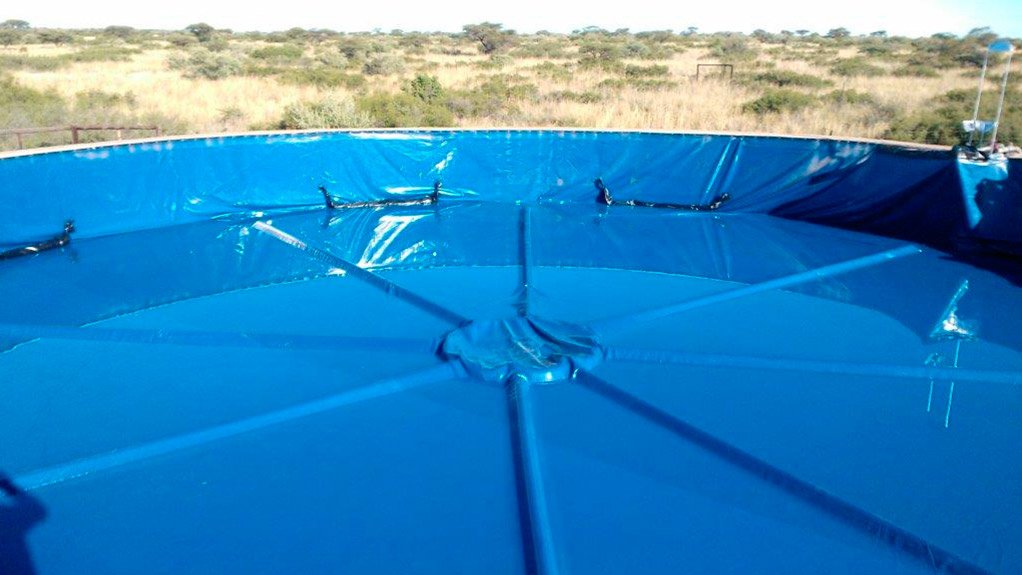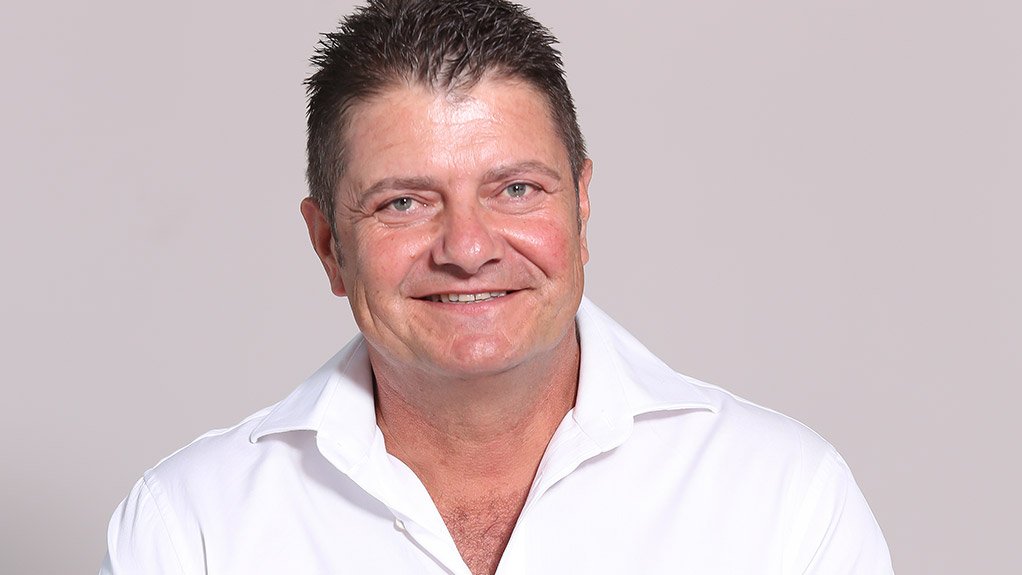With South Africa facing high levels of water loss and having to secure existing water resources, industrial packaging and sheeting company Damax Kahn & Kahn Plastics says its dam liner is an effective barrier against water loss caused by seepage and pollution in farming and municipal and industrial applications.
Company MD David Tromp tells Engineering News that the locally produced high-density polyethylene recyclable product is being used by several local municipalities, mines, farms and aquaculture companies to preserve water resources and seal water storage facilities in South Africa.
“South Africa is a water-stressed, semiarid country, with a yearly rainfall of about 500 mm, which is less than 60% of the world average. The financial, human and ecological impacts of global and local changes to the climate are evident in South Africa, particularly where water resources are under the greatest pressure,” he explains.
The liner contains a vessel that houses stored liquid in such a way that it prevents water from leaking into the earth and harmful spillage from damaging or contaminating the surrounding area. The liner can be custom-made to suit a particular volume and density of liquid. It is fused and fitted on site by trained technicians using specialised machinery to meet customer requirements.
Tromp adds that the company’s holistic range of liners aims to prevent the loss of valuable rainfall by harvesting it and redistributing it. Available water resources and potential water sources are efficiently contained until these are required for application.
He explains that Damax Kahn & Kahn Plastics conceptualised the dam liner in the mid-1980s and first introduced it onto its market in 2000. It is currently in use at sewerage projects, winery settlement chambers, irrigation dams, biodigesters and petroleum containment facilities; it is also used for molasses containment. The dam liner can be used temporarily or for up to 15 years, depending on client requirements.
“The common thread among all consumers is the need for containment and easy access to the redistribution of all liquids contained in a manner that is as environmentally viable and cost effective as possible.”
The water seal boasts high tensile strength and is stress, crack, puncture, tear, chemical and ultraviolet resistant, making the dam liner durable and cost effective, Tromp notes.
Further, it also has a long service life, is fully recyclable and, contrary to similar products on the market, does not require yearly maintenance, making it suitable for use in sewerage projects.
As an indication of the product’s adaptability, Tromp cites a petroleum company that adopted the dam liner for its clean-up and filtration dam, and an agricultural project that used it for storage dams for cattle feed lots. The dam liner is available in a standard 3.4 m width and, depending on the thickness of the liner, is supplied in lengths varying from 80 m to 150 m per roll.
Meanwhile, the company’s water preservation products include the Versadam and Versapool – mobile storage units that are mostly used by the construction, mining and aquaculture industries; the wire mesh pools for medium storage applications; the concrete dam drop for liners used in the farming sector to help make cracked reservoirs fully operational; tank repair kits to repair roto-moulded tanks; and the steel-reinforced reservoirs for large storage applications.
Tromp concludes that the company prides itself on using locally produced material in the manufacture of all its products.
Edited by: Leandi Kolver
Creamer Media Deputy Editor
EMAIL THIS ARTICLE SAVE THIS ARTICLE
To subscribe email subscriptions@creamermedia.co.za or click here
To advertise email advertising@creamermedia.co.za or click here















